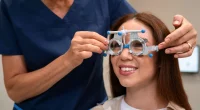Degenerative lumbosacral stenosis also known as Cauda equina syndrome happens when the roots of the nerve in the lower back get squeezed, which can block feeling and movement in the body.
CES is an uncommon condition, impacting about 1 in 33,000 to 100,000 individuals. The nerve collection at the end of the back, which controls the bladder, legs, and other areas of the lower body is known as cauda equina.
CES is an emergency that requires surgery right away. If it’s not treated quickly, it can cause serious, long-lasting problems.
Overview
The cauda equina is a bundle of nerves located at the spinal cord’s very end. Its name means “horse’s tail” because it looks like one.
The spinal cord stops at the upper part of the lower back, known as the lumbar spine.
The nerves in the cauda equina help control the legs and bladder. They work by sending messages to and from the pelvic organs and lower body, allowing you to move your legs and feel sensations.
Cauda equina syndrome happens when these nerves get damaged or squeezed, affecting their ability to function properly.
Symptoms
Cauda equina syndrome can lead to a range of symptoms, which vary based on the location and severity of the nerve compression. The most common sign is urinary retention. This happens when the bladder contains urine, but the individual does not feel the need to urinate.
Other frequent signs of CES include sexual malfunction, which can affect a person’s ability to engage in sexual activity. Individuals may also experience bowel or urinary incontinence, meaning they cannot control their bladder or bowel movements. Another symptom is anesthesia, which causes a loss of sensation in areas that would come into contact with a saddle, like the anus, genitals, and buttocks.
Additionally, CES can cause weakness or paralysis in multiple roots of the nerve extending into the legs, leading to difficulty controlling or moving the legs. Back or leg pain, known as sciatica, is also a common symptom.
Types
CES is classified into two main kinds: one is complete another is incomplete.
Complete CES
It happens when a person completely loses control of their bladder. This leads to urinary retention, where the bladder fills with urine but cannot be emptied properly, resulting in leakage and overflow. In this condition, individuals experience incontinence, meaning they cannot control when they urinate.
Incomplete Cauda Equina Syndrome
It happens when an individual still retains some control and sensation in their bladder but with some issues. They may have a decreased urge to urinate, changed sensations of bladder fullness, and may require tension to urinate. Additionally, individuals with incomplete CES may struggle with fully unloading their bladder.
When to Consult a Healthcare Provider
Diagnosing CES can be challenging, but seeking early treatment is crucial to prevent problems and avoid long-term damage. It is important to consult a healthcare provider promptly if you experience any of the following symptoms:
Bladder issues, such as difficulty urinating or urinary retention, are a key concern. Bowel problems, including loss of control over bowel movements, are also significant. Additionally, if you notice severe or worsening issues with your lower extremities, like a loss of sensation or weakness in your legs, it is essential to seek medical attention promptly. Early intervention can make a significant difference in managing CES effectively.
Causes
A large herniated disk in the back is the common cause of cauda equina syndrome. While this herniated disk can sometimes result from a traumatic injury, there are cases where no clear cause is identified.
Other causes of cauda equina syndrome involve lumbar spinal stenosis, which is the diminishing of the spinal canal in the lower back. Spinal lesions and tumors can also compress the nerves, leading to CES. Congenital abnormalities, such as defects present from birth, might contribute to the condition as well.
Inflammation or infections of the spine can cause CES, along with distressing injuries to the lower back from events like falls, gunshots, or car accidents. Spinal hemorrhage, including subarachnoid, epidural, or subdural bleeding, can also be a cause. Additionally, spinal AVMs and complications from postoperative lumbar spine procedures may and spinal anesthesia leads to CES.
Diagnosis
To diagnose CES, a healthcare provider usually starts with a physical examination, reviews the patient’s medical history, and orders various imaging examinations.
During the physical examination, the healthcare provider will evaluate several aspects of the patient’s condition, including stability, spinal alignment, reflexes, sensation, strength, and range of motion. These assessments help determine the extent of nerve involvement and the impact on bodily functions.
Imaging tests are also crucial for diagnosis. X-rays, CT scans, and MRI scans are used to get detailed views of the spine, allowing the healthcare provider to identify any abnormalities or compressions that might be causing CES.
Treatment
When a healthcare provider confirms a diagnosis of CES, they typically suggest emergency surgery. The primary aim of this surgery is to alleviate the pressure on the roots of the nerve as rapidly as possible.
The best chance of recovery is usually achieved if treatment is started in two days of the symptoms. This prompt action helps decrease the chance of ongoing issues with sensation, urinary control, movement, and bowel function.
Recent research from 2022 suggests that getting surgery within one day of the onset of symptoms leads to even better results. Therefore, getting treatment as soon as possible is crucial for the best result. The sooner the surgery is performed, the higher the likelihood of a successful recovery.
Prevention
Preventing CES may not always be possible, but taking steps to decrease the chance of traumatic injuries to the spinal cord or spine can help lower the chances of developing the condition.
To minimize the risk of such injuries, individuals should take several precautions. Always wear a safety belt when traveling in automobiles to protect against accidents. Avoid engaging in contact sports, which can lead to serious spinal injuries. On job sites, use safety equipment to prevent accidents and falls. When riding motorcycles or bicycles, putting on helmets and protective gear is essential for safeguarding against injuries. Additionally, practicing safety measures when handling firearms can further reduce the risk of trauma to the spine. Taking these preventive actions can help protect your spine and decrease the chance of CES.
Outlook
The outlook for someone with CES greatly improves if they receive emergency treatment within two days of the first symptoms. Quick action can significantly enhance the chances of a better recovery and decrease the chance of lasting damage.
Without prompt treatment, there is a high risk of permanent loss of function and even paralysis. The sooner treatment is started, the better the chances of preventing severe long-term complications.
After surgery, recovery of function of the bladder can be slow and might take years to fully improve. However, individuals usually see improvements in their ability to move and control their muscles shortly post-surgery. While some recovery may take time, early intervention often leads to better overall outcomes
Summary
CES happens when the roots of the nerve in the back are compressed, affecting bladder control and leg function. It can be caused by conditions like herniated disks, spinal tumors, or trauma. Early diagnosis and treatment are crucial, with emergency surgery needed within two days for the best chance of recovery. Without prompt treatment, there’s a high risk of permanent damage. Post-surgery, bladder function recovery may take years, but motor skills often improve quickly. Preventive measures include wearing safety belts, avoiding high-risk activities, and using protective gear.








